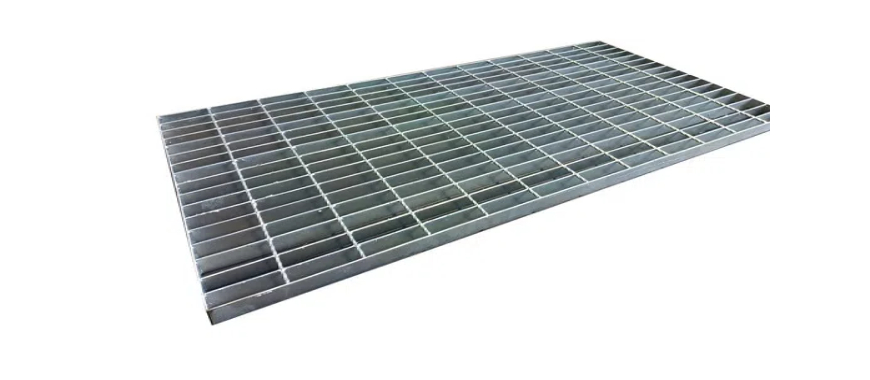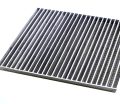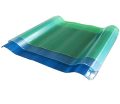
Aluminum stands as a cornerstone in the modern materials landscape, celebrated for its versatility across a plethora of industries. Its lightweight nature, combined with exceptional durability, makes it a standout choice for sectors demanding both robustness and ease of manipulation. From automotive to aerospace, aluminum’s usage is as broad as it is impactful. Yet, it’s in the construction domain where aluminum’s properties shine distinctly, offering innovative solutions to traditional challenges. Specifically, the deployment of aluminum in creating walkways with handrails showcases a blend of functionality and aesthetic appeal. Aluminum walkways with handrails not only promise enduring stability and safety but also introduce a level of design flexibility and environmental friendliness seldom matched by other materials. This fusion of practical benefits positions aluminum walkways with handrails as a prime choice for contemporary construction projects aiming to marry durability with design elegance.
Why Choose Aluminum Walkways with Handrails?
Selecting the right material for constructing functional and protective structures such as walkways is critical. Here are ten compelling reasons that make aluminum walkways with handrails a superior choice:
- Durability: Aluminum is highly resistant to corrosion, which prevents rust and decay. This enduring nature ensures that aluminum walkways with handrails remain durable even under harsh environmental conditions.
- Lightweight Nature: Aluminum’s low density facilitates handling and installation, significantly reducing transportation and labor costs. Its lightweight yet strong characteristic also mitigates stress on the supporting structures.
- Customization and Flexibility: Aluminum walkways with handrails can be tailored to fit various environmental needs and aesthetic tastes. They can be crafted in different dimensions and shapes, offering considerable flexibility in design.
- Ease of Installation: The lighter weight of aluminum simplifies the installation process. Components can be pre-assembled, allowing for quicker and less labor-intensive construction onsite.
- Low Maintenance: Aluminum surfaces naturally resist weathering and ultraviolet rays, minimizing the need for frequent maintenance or replacements.
- Improved Safety: Aluminum walkways with handrails provide increased safety. They can be designed with anti-slip surfaces and ergonomic handrails to enhance grip, which is crucial in wet or icy conditions.
- Aesthetic Appeal: Aluminum offers a sleek, modern appearance that can be anodized or painted in various colors to complement surrounding architectures and landscapes.
- Environmental Sustainability: Aluminum is 100% recyclable with no loss of quality or properties, promoting sustainable construction practices by reducing waste and energy usage.
- Cost-Effectiveness: Due to the durability and low maintenance needs of aluminum, the long-term costs associated with aluminum walkways with handrails are considerably lower compared to other materials.
- Thermal Resistance: Unlike some metals, aluminum does not become excessively hot or cold in extreme weather conditions, maintaining a more consistent surface temperature for safety and comfort.
Overall, choosing aluminum walkways with handrails combines multiple benefits, from durability and safety to aesthetics and environmental responsibility. Its advantageous properties fulfill both technical and economic criteria, making it an ideal choice for projects seeking long-term value and functionality.
Key Features of Aluminum Channel for 1 4 Fiberglass Support
Safety Features of Aluminum Walkways with Handrails
Aluminum walkways with handrails incorporate essential safety features designed to ensure the stability and security of users across various environments. These features not only help in reducing the risk of accidents but also ensure that the walkways comply with numerous safety codes and regulations, facilitating accessibility and ease of use for all individuals.
Inherent Safety Enhancements
The design and construction of aluminum walkways with handrails focus heavily on user safety. Here are detailed points concerning the importance of handrails and other safety considerations:
- Stability and Support: Handrails provide essential support, allowing users to steady themselves, especially in wet or slippery conditions.
- Prevention of Slips and Falls: Handrails can significantly mitigate the risk of slips and falls by offering a reliable grip point that helps maintain balance.
- Height and Ergonomics: The ergonomically designed handrails are placed at an optimal height to cater to the average user, enhancing comfort and usability.
- Continuous Access: Handrails that run continuously along the walkway ensure that support is available at every point along the path, enhancing safety.
- Visibility: Aluminum walkways with handrails often incorporate visual elements (e.g., reflective surfaces or markers) that increase the visibility of the handrail edges, minimizing accident risks.
- Material Safety: The surface of the aluminum used is often textured or treated to prevent slips, ensuring a safer walking surface even during rainy or snowy conditions.
Compliance with safety standards plays a pivotal role in the design of aluminum walkways with handrails:
- ADA Compliance: Ensures that walkways are accessible and safe for all users, including those with disabilities.
- OSHA Standards: Complies with occupational safety guidelines to prevent workplace injuries.
- Load Bearing: Engineered to support significant loads, minimizing the risk of structural collapse under weight.
- Side Guards: Includes side protection to prevent accidental falls from the walkway edges.
- Weather Resistance: Designed to withstand adverse weather conditions without compromising structural integrity or safety.
- Regular Safety Audits: Conforms to standards that require regular audits, ensuring sustained safety compliance and maintenance updates.
Accessibility for All Users
Accessibility is a core aspect of the design of aluminum walkways with handrails, making them ideal for environments that require universal access:
- Ramp Integration: Aluminum walkways can be easily integrated with ramps, supporting wheelchair access and mobility for users with other disabilities.
- Non-Slip Surfaces: The walkways feature non-slip surfaces that are crucial for users with reduced mobility, mitigating the risk of falls.
- Uniform Height and Tread: Uniform tread and height ensure ease of use, helping reduce the effort required to navigate the walkway.
- Adequate Width: These walkways are designed to have a width that accommodates various users simultaneously, including those requiring extra space for mobility aids.
- Minimal Maintenance Needs: The low maintenance requirement of aluminum ensures that the walkways remain safe and accessible without frequent repairs.
- Smooth Integration: Aluminum walkways with handrails are designed for smooth integration with existing structures, which is vital for maintaining an uninterrupted path of travel, reducing hazards related to abrupt design changes.
Aluminum walkways with handrails are engineered to ensure safety, comply with regulatory standards, and provide universal accessibility, making them ideal for a wide range of public and private settings. Their well-thought-out design elements ensure convenience and security for all users while promoting inclusive and safe environments.
Installation and Maintenance of Aluminum Walkways with Handrails
The installation and maintenance of aluminum walkways with handrails are key factors that contribute to their popularity in various applications. These walkways offer a balance of lightweight design, durability, and ease of maintenance, making them an ideal choice for many projects.
Ease of Installation
Aluminum’s lightweight nature significantly eases the installation process of aluminum walkways with handrails. Here are some detailed points illustrating this benefit:
- Reduced Labor Cost: The lightweight material allows fewer workers to handle, lift, and install the walkway, reducing labor costs.
- Quicker Assembly: Components of aluminum walkways with handrails are often pre-fabricated, leading to quicker assembly times on site.
- Less Structural Stress: Lightweight aluminum imposes less stress on supporting structures, which can reduce the need for additional reinforcement.
- Ease of Transport: Aluminum is easier to transport to the installation site, as it requires less heavy lifting equipment.
- Adaptability: The flexible nature of aluminum allows for easy adjustments during installation, accommodating site-specific needs.
- No Heavy Machinery Needed: Most installation processes for aluminum walkways with handrails do not require heavy machinery, which can simplify logistics and reduce installation costs.
A brief overview of common tools and techniques used in the installation process includes:
- Hand Tools: Basic hand tools such as wrenches, screwdrivers, and hammers are typically sufficient.
- Riveting and Bolting: Aluminum sections are commonly joined by rivets or bolts, ensuring a secure and lasting fit.
- Welding Equipment: For permanent joints, welding may be employed, though it is less common due to aluminum’s prefabricated nature.
- Leveling Instruments: Ensuring the walkway is level is critical, using tools such as spirit levels or laser levels.
- Measuring Tapes and Markers: Accurate measurement and marking are crucial to align components correctly.
- Scaffolding or Ladders: For elevated installations, appropriate scaffolding or ladders are required to safely access higher levels.
- Safety Gear: Standard safety equipment, including helmets, gloves, and eye protection, is essential to prevent injuries during installation.
Low Maintenance Requirements
Aluminum walkways with handrails are renowned for their minimal maintenance needs. Key points include:
- Corrosion Resistance: Aluminum naturally resists corrosion, eliminating the need for frequent painting or sealing.
- Durability: Unlike materials that may degrade over time due to environmental factors, aluminum maintains its integrity, reducing the need for repairs.
- Ease of Cleaning: Aluminum surfaces are easy to clean with basic cleaning agents to remove dirt and debris.
- No Rust: Since aluminum does not rust, the structural and aesthetic integrity of the walkway is preserved for a longer duration.
- UV Resistance: Aluminum does not degrade under UV light, ensuring that the material does not become brittle or discolored from sunlight exposure.
- Insect Resistance: Aluminum is not susceptible to insect damage, which can be a significant issue with other material types like wood.
Common maintenance practices for aluminum walkways with handrails include:
- Regular Inspections: Scheduled inspections can help catch issues before they become serious, ensuring safety and integrity.
- Cleaning: Regular cleaning prevents build-up of materials that could cause slip hazards or aesthetic degradation.
- Bolt Tightening: Periodically checking and tightening bolts and fasteners can prevent structural loosening.
- Wear Checks: Checking for any signs of wear or damage, especially in high traffic areas, is crucial.
- Lubrication of Moving Parts: If there are any gates or movable joints, occasional lubrication helps maintain smooth operation.
- Immediate Repairs: Addressing any damage or wear immediately can prevent further deterioration and potential safety hazards.
- Documentation: Keeping records of all maintenance activities helps in planning future maintenance and assessing durability over time.
Through easy installation and minimal maintenance requirements, aluminum walkways with handrails offer a cost-effective and durable solution for safe pedestrian access in various settings.
Environmental Impact and Sustainability of Aluminum Walkways with Handrails
In the context of modern construction, the use of aluminum, especially in applications like aluminum walkways with handrails, presents an excellent opportunity to embrace environmental stewardship while not compromising on quality and durability. Aluminum offers distinct environmental advantages that stem from its recyclability and energy efficiency. Delving into these aspects reveals the potential for sustainable development and responsible resource management in the construction industry.
Environmental Benefits of Using Aluminum in Construction Projects
Aluminum stands out for its recyclability, which is fundamental to its role in eco-friendly construction projects. Here are several points highlighting the environmental benefits of using recycled aluminum, specifically in products like aluminum walkways with handrails:
- Energy Conservation: Recycling aluminum consumes 95% less energy than producing new aluminum from raw bauxite, significantly conserving energy resources.
- Infinite Recycling: Aluminum can be recycled indefinitely without loss of quality or physical properties, ensuring the material for aluminum walkways with handrails can be reused in future projects.
- Reduced Carbon Footprint: The process of recycling aluminum emits only 5% of the carbon dioxide compared to primary production, reducing greenhouse gas emissions.
- Enhancing LEED Ratings: Using recycled aluminum contributes to higher LEED ratings, promoting sustainable construction practices.
- Efficient Transportation: Due to its lightweight nature, transporting aluminum, including aluminum walkways with handrails, requires less energy, reducing emissions associated with logistics.
- Durability and Longevity: Aluminum’s resistance to corrosion extends the lifespan of structures, reducing the need for frequent replacements and minimizing resource use.
- Resource Conservation: The possibility of using lighter support structures with aluminum reduces the overall material requirements, further conserving resources.
Structural Advantages of Using 4 Inch Fiberglass Angle Products
Energy Efficiency and Environmental Footprint
The production and application of aluminum, particularly in aluminum walkways with handrails, highlight the material’s energy efficiency and its lower environmental footprint, especially when compared to other construction materials:
- Lower Energy Production: Manufacturing aluminum from recycled materials significantly lowers energy requirements, improving the overall energy footprint of construction elements like aluminum walkways with handrails.
- Extended Material Lifetime: The energy consumed in producing aluminum is offset by its extended lifetime and the benefits derived from its recyclability.
- Renewable Energy Integration: The aluminum industry is progressively incorporating renewable energy sources, reducing reliance on fossil fuels.
- Advanced Production Technologies: Innovations such as inert anode electrolysis reduce or eliminate greenhouse gas emissions from the smelting process.
- Thermal Efficiency: Aluminum’s thermal insulation properties contribute to energy savings in buildings, enhancing the sustainability of projects that incorporate it.
- Comparison with Other Materials: When considering the lifecycle energy consumption and environmental impact, aluminum offers advantages over materials like steel or concrete, largely due to its recyclability and durability.
- Eco-friendly Production: Efforts to make aluminum production more eco-friendly are ongoing, including the use of solar energy and hydroelectric power, further cementing aluminum’s role in sustainable construction.
By integrating aluminum walkways with handrails into construction projects, stakeholders can significantly mitigate the environmental impacts associated with building. The recyclability and energy efficiency of aluminum not only contribute to reduced environmental footprints but also promote sustainability in the construction industry, paving the way for more responsible use of resources and eco-friendly construction practices.
Case Studies/Examples of Aluminum Walkways with Handrails
The implementation of aluminum walkways with handrails in various sectors showcases the versatility, safety, and sustainability of this construction choice. These real-world examples demonstrate the effectiveness of aluminum in enhancing accessibility and navigating environments, ranging from industrial sites to public spaces and educational facilities.
Real-world Implementations
Below are five examples where aluminum walkways with handrails have been successfully implemented:
- Industrial Facilities: In a large manufacturing plant, an extensive network of aluminum walkways with handrails was installed to provide safe and durable access across machinery and equipment. This solution facilitated easy maintenance and improved worker safety significantly.
- Public Parks: A public park modernized its pathways by installing aluminum walkways, ensuring safe passage through natural landscapes while minimizing environmental impact. The handrails added a layer of safety for all visitors, including those with mobility challenges.
- Educational Campuses: A university campus adopted aluminum walkways to connect different buildings. This not only enhanced the aesthetic appeal of the campus but also provided durable, weather-resistant pathways for students and staff.
- Hospitals: To improve accessibility, a hospital installed aluminum walkways with handrails leading from the parking area to the main entrance. This facilitated easy access for patients, especially those using wheelchairs or other mobility aids.
- Commercial Complexes: A sprawling commercial complex used aluminum walkways as a means to interconnect various sections of the shopping area, providing shoppers with a safe, durable, and aesthetically pleasing walking surface.
Feedback from Benefited Industries
The feedback from industries that have benefited from the installation of aluminum walkways with handrails highlights several important points:
- Durability and Low Maintenance: Industries appreciate the durability of aluminum, noting its resistance to corrosion and the minimal maintenance it requires.
- Safety: The added safety features, particularly the handrails, have been crucial in preventing accidents and ensuring the well-being of users in all types of weather conditions.
- Aesthetic Appeal: Many facilities have noted the modern and clean appearance of aluminum, which enhances the overall look of the premises.
- Cost-Effectiveness: In the long term, the cost benefits become apparent, with reduced need for replacements or repairs compared to other materials.
- Quick Installation: The ease and speed of installation have been significant advantages, minimizing disruption to daily operations.
- Environmental Impact: There’s a growing recognition of the eco-friendly aspects of using aluminum, especially in sectors aiming to promote sustainability.
- Customizability: The ability to customize the design and fit of the walkways and handrails to meet specific site requirements has been highly valued.
- Accessibility: Institutions, especially educational and healthcare facilities, have praised the role of aluminum walkways in enhancing accessibility, emphasizing their importance in creating inclusive environments.
These case studies and feedback underscore the multiple benefits of aluminum walkways with handrails, showcasing their importance in creating safe, durable, and accessible environments across a wide range of industries. The positive reception from varied sectors highlights aluminum’s role in modern, responsible construction practices.
Diamond Grinder Wheels: The Best Option for Cutting Concrete

As the editor of GangLong Fiberglass, I have years of experience and in-depth research, focusing on cable tray products, fiberglass solutions, and grille systems. I incorporate years of industry insights and practical experience into every content, committed to promoting the progress of the industry. At GangLong Fiberglass, my commitment is reflected in every product, from innovative cable trays to durable fiberglass solutions and sturdy grille systems. As an authoritative voice in the industry, my goal is to provide valuable information to professionals and businesses and promote forward-looking solutions.


